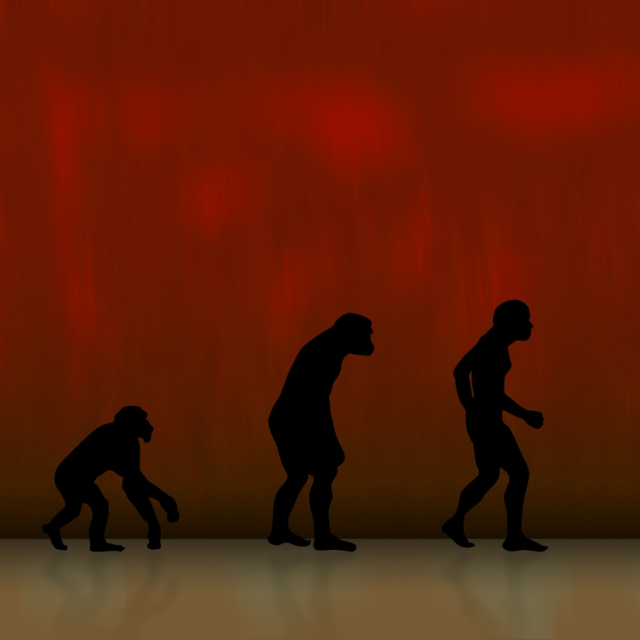Animal evolution is one of the most fascinating and fundamental processes in the history of life on Earth. This phenomenon, driven by natural selection and other biological mechanisms, explains the diversity and complexity of the species we see today. From the first single-celled organisms to today's sophisticated mammals, evolution tells us a story of adaptation, survival, and constant change. In this article, we will explore the key aspects of animal evolution, its most significant milestones, and its impact on modern biodiversity.
Origin of life and the first animals.
The origin of life on Earth dates back to approximately 3.8 billion years ago, when the first single-celled organisms emerged in the primitive oceans. These microbes, such as bacteria and archaea, adapted to extreme conditions, laying the foundation for complex life.
The first multicellular animals appeared about 600 million years ago during the Ediacaran period. These included soft organisms similar to jellyfish and worms. However, it was in the Cambrian period, about 541 million years ago, that the explosion of animal diversity occurred. This event, known as the Cambrian Explosion , marked the beginning of accelerated evolution and the appearance of almost all the major groups of modern animals.
According to the National Geographic portal, this period was crucial because animals developed complex structures such as exoskeletons, articulated appendages and more advanced nervous systems.
Mechanisms of evolution.
Animal evolution occurs through several interconnected mechanisms:
Natural selection:
Proposed by Charles Darwin, this mechanism explains how individuals with more favorable characteristics are more likely to survive and reproduce.Genetic mutations:
Mutations in DNA generate variations within a population. Some of these variations may be beneficial and, over time, lead to new adaptations.Genetic drift:
Random changes in gene frequencies in a population can influence evolution, especially in small populations.Migration and gene flow:
When individuals move between populations, they introduce new genes, which can accelerate genetic diversity.Speciation:
This process occurs when populations of a species become isolated and evolve independently, giving rise to new species.
Key milestones in animal evolution.
1. Emergence of vertebrates:
About 525 million years ago, the first vertebrates appeared in the oceans. These animals had a backbone and structures such as primitive skulls and jaws. Fish were the first vertebrates to diversify.
2. Colonization of the land:
360 million years ago, vertebrates began to adapt to life on land. Amphibians, descendants of lobe-finned fish, were the first to venture out of the water. Later, reptiles developed adaptations such as amniotic eggs, allowing them to reproduce on dry land.
3. Evolution of mammals:
Mammals evolved from synapsid reptiles about 200 million years ago. These animals developed features such as hair and mammary glands, which gave them an evolutionary advantage. According to BBC Science Focus , the mass extinction that wiped out the dinosaurs 66 million years ago allowed mammals to diversify and occupy numerous ecological niches.
4. Emergence of primates:
About 60 million years ago, the first primates appeared in the trees. Their prehensile hands and binocular vision gave them adaptive advantages. Eventually, some primate species evolved into hominids, the group to which humans belong.
Evolution and current biodiversity.
Evolution not only explains how species arose, but also why biodiversity is so rich today. Each species has a place in the ecosystem, and its adaptations are intrinsically linked to its environment. For example:
- Camouflage and mimicry: Many animals, such as stick insects, have developed skills to blend into their surroundings and avoid predators.
- Feeding specialization: Hummingbirds have beaks adapted to feed on the nectar of specific flowers, an example of coevolution between plants and animals.
The WWF portal highlights that biodiversity is essential to maintaining healthy ecosystems, which underlines the importance of conserving natural habitats.
Real-time evolution.
Although evolution is often perceived as a slow process, there are documented cases of rapid evolutionary changes. For example:
- Manchester Butterflies: During the Industrial Revolution, dark-coloured butterflies became prevalent due to pollution blackening trees, a phenomenon known as industrial melanism.
- Antibiotic-resistant microbes: Bacteria have developed drug resistance due to the overuse of antibiotics, showing how natural selection acts in a relatively short time.
These examples highlight that evolution is a continuous process and is observable even in the present.
Human impact on animal evolution.
Human activity has significantly altered the course of animal evolution. Habitat destruction, climate change and the introduction of invasive species are forcing many species to adapt rapidly or face extinction.
A study cited by Science Daily notes that species such as polar bears are changing their feeding habits due to melting sea ice. Other animals, such as some birds, are advancing their migratory patterns in response to rising temperatures.
Animal evolution is a fascinating and ongoing process that has shaped life on Earth for billions of years. From the first single-celled organisms to the diversity of species we know today, evolution tells us a story of adaptation, innovation and survival.
Understanding how evolution works not only helps us appreciate the complexity of life, but also make informed decisions to protect it. In a world where human impacts are accelerating environmental changes, understanding this process can be key to preserving biodiversity and ensuring a sustainable future for all life forms.
